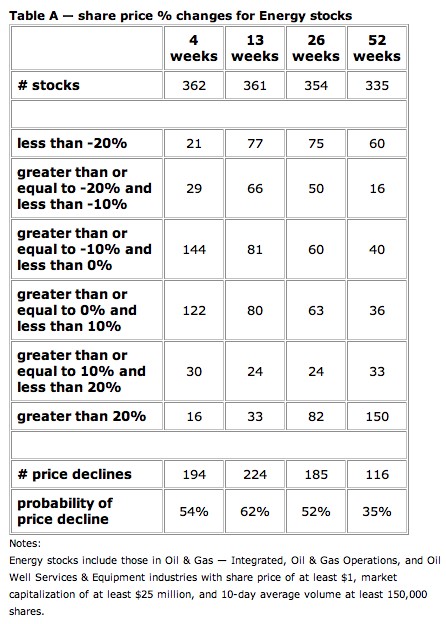Specialized ETF Investing Strategies
Post on: 30 Март, 2015 No Comment

Investments » Specialized ETF Investing Strategies
There are some really cool exchange-traded funds, or ETFs, out there: Currency hedged, short or inverse ETFs, ETFs specializing in IPOs and nearly any esoteric corner of the investing universe you can think of. Even the Winklevoss twins — who claimed Facebook founder Mark Zuckerberg stole their idea for a social networking site — are opening an ETF that tracks bitcoin, a virtual asset.
As nifty as these specialized ETFs seem, they may not be for all, or even most, investors.
What are specialized ETFs?
The first ETF introduced in 1993 was a security that would track the Standard and Poor’s 500 index but trade like a stock, with prices set throughout the day. It’s still around: the SPDR S&P 500 ETF (ticker: SPY) happens to be the most liquid and most highly traded ETF in the world by a wide margin.
Specialized ETFs, on the other hand, typically have an extremely narrow focus; for instance, they may concentrate on a certain industry or country.
Or, the fund will focus on what is called an investment factor by focusing on small-cap stocks, value stocks, or low-volatility stocks, for example, says CFP professional Jonathan Duong, CFA, founder and president of Wealth Engineers in Denver.
More On Investing:
investing
Why would you want a specialized ETF?
Investors pursuing a core satellite approach to their portfolio may be hooked by the ease of trading and relatively low cost of ETFs. Broad-based passive ETFs can stand in for the core section of the portfolio while any number of specialized ETFs could orbit around the core holdings.
Specialized ETFs may be held long term to fill gaps in a diversified portfolio, or shorter term to speculate or hedge existing positions, oftentimes through leverage or inverse leverage, says Darryl J. Poisson, founder and president of DJP Wealth Management in Tampa, Florida. Specialized ETFs are also appropriate to gain specific and targeted exposure to a particular area of conviction.
Andrew Ahrens, CEO of Ahrens Investment Partners in Lafayette, Louisiana, likes to make tactical leveraged bets when the occasion warrants. We’re into the oil and gas sector, he says. They tend to go up when a summer storm hits. DIG (ProShares Ultra Oil & Gas) is a two-times bullish ETF on oil and gas, meaning it provides double the return of the Dow Jones U.S. Oil & Gas index. We have clients who buy that in anticipation of the storms we’re going to get this summer.
For an investor with a particular expertise or an investor working with an experienced adviser, such strategies can work out. But market timing strategies aren’t for the faint of heart or uninformed.
Factor investing can be a specialty
Factor ETFs pool companies or stocks with similar qualities or attributes: value stocks, small or large companies, momentum stocks or even metrics such as return on equity.
There are all sorts of reasons someone may want to add factor-based ETFs to their portfolio.
Such funds, if used correctly, can help to diversify a portfolio, says Duong. However, it’s absolutely critical that investors understand how risk factors work and accept that investing with this approach is a lifelong decision.
For instance, some studies show that value stocks and small-cap stocks outperform the market over time. Investors interested in tilting their portfolio toward value or small caps could use ETFs to do that.
But they tend to be more volatile, and those risks tend to show up in greater magnitude when we experience economic declines, says Duong.
Investors lacking the courage of such convictions could find the volatility of some strategies difficult to withstand.
If you move in and out of funds to chase the latest ‘smart beta’ strategy, you are destined to failure. In that case, you would have been better off with a much simpler approach, Duong says.
Beware of arcane ETF investing strategies
Most investors already do worse than the broad market, according to the current annual report from Dalbar called the Quantitative Analysis of Investor Behavior. In 2013, the average equity fund investor underperformed the stock market by 6.87 percent.
Lowering the level of diversification in portfolios and concentrating risk with niche ETFs probably won’t help.
(Investors) may think they are diversifying because they have what seems like an unusual asset class or sector, but typically we see diversification suffer when investors are using niche ETFs, says CFP professional Peter Lazaroff, CFA, portfolio manager at Acropolis Investment Management in St. Louis.
Small investors often don’t have the scratch to spread around a lot of concentrated positions the way deep-pocketed institutions do. With a limited number of investing dollars, diversification in the form of index funds or plain-vanilla ETFs gives investors more bang for their buck, relative to the risk.
And, let’s face it: The draw of esoteric strategies and niche investments is the potential for bigger returns — but that means taking on more risk.
How many investors ever thought about shorting Treasuries before short Treasury ETFs came out? Yet you had all these investors when the 10-year was at 3.5 percent saying interest rates are going up — and they lost money all the way down, says Jim Cahn, chief investment officer at Wealth Enhancement Group.
ETFs have wonderful attributes, but they allow people to engage in value-destroying behaviors, he says.
Unless your sizable and diversified portfolio is already firing on all cylinders, most specialized ETF investing strategies are probably something to skip.














